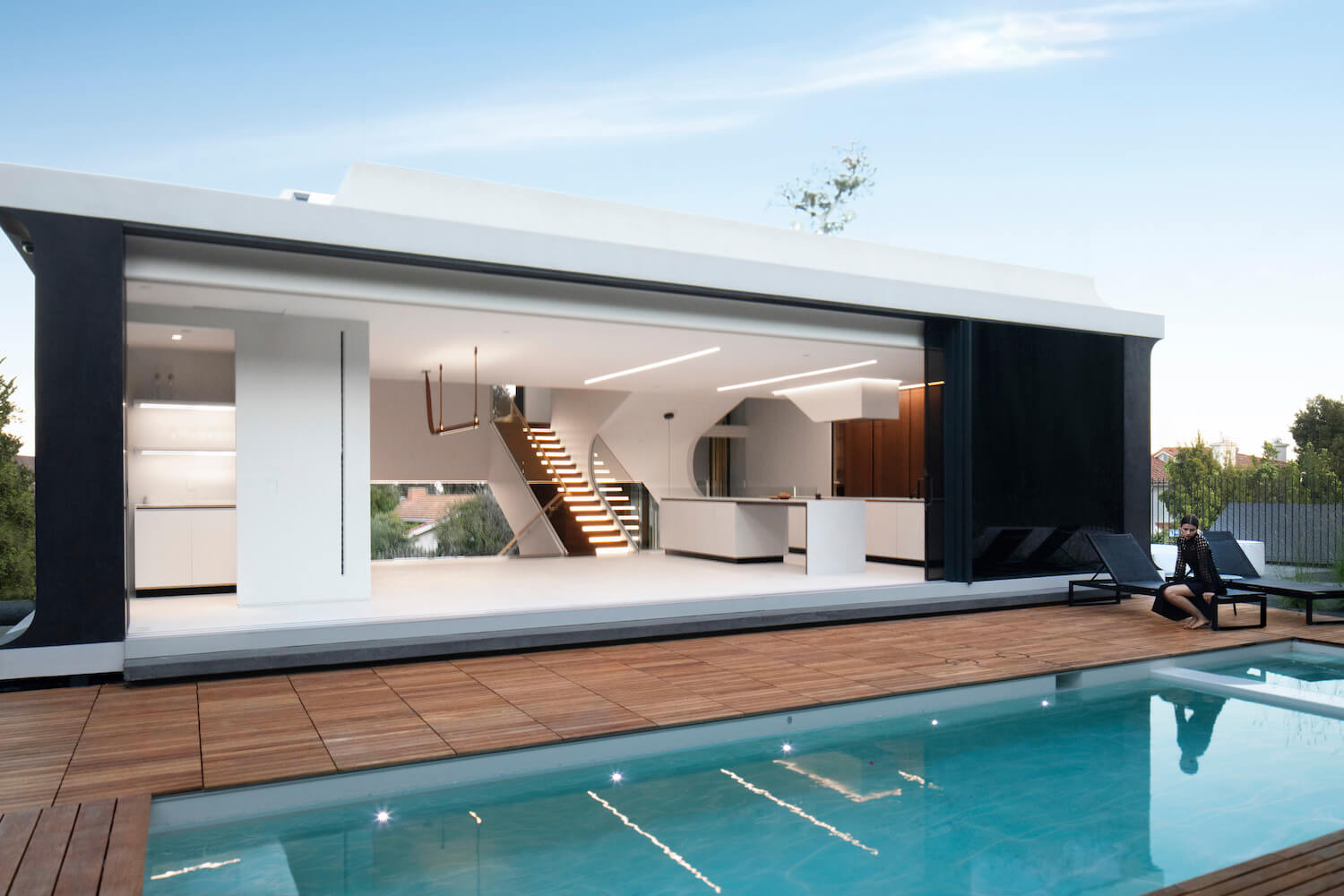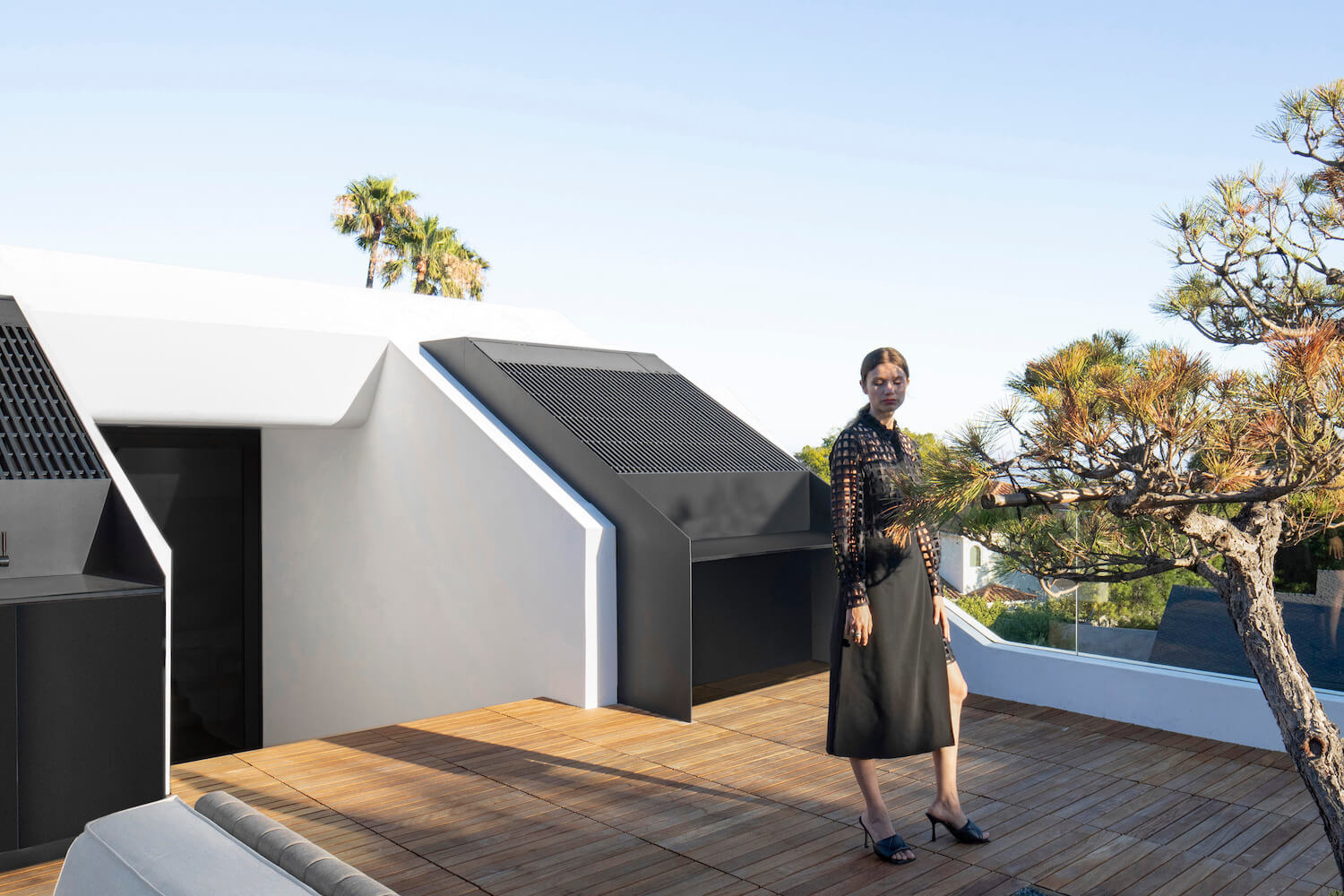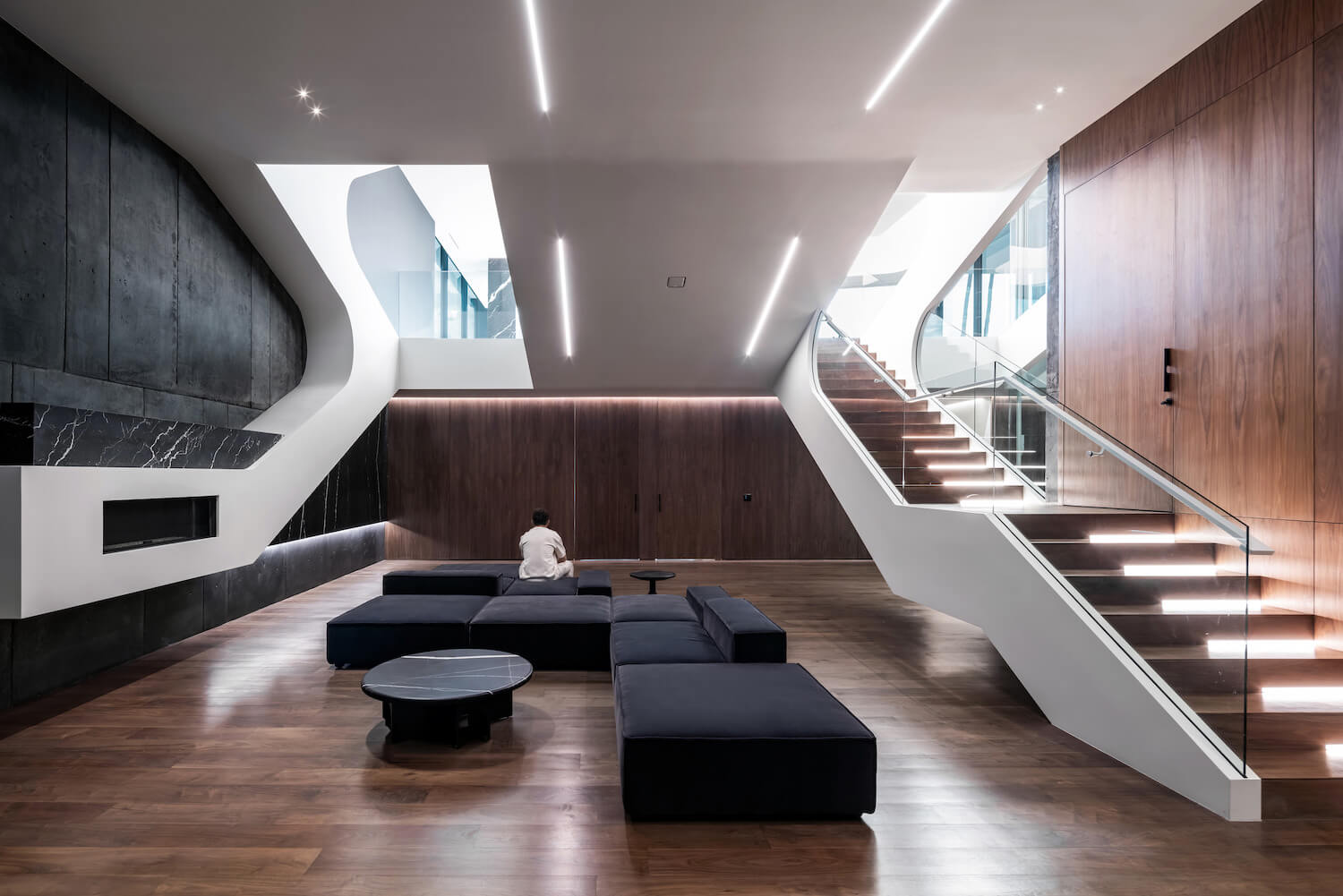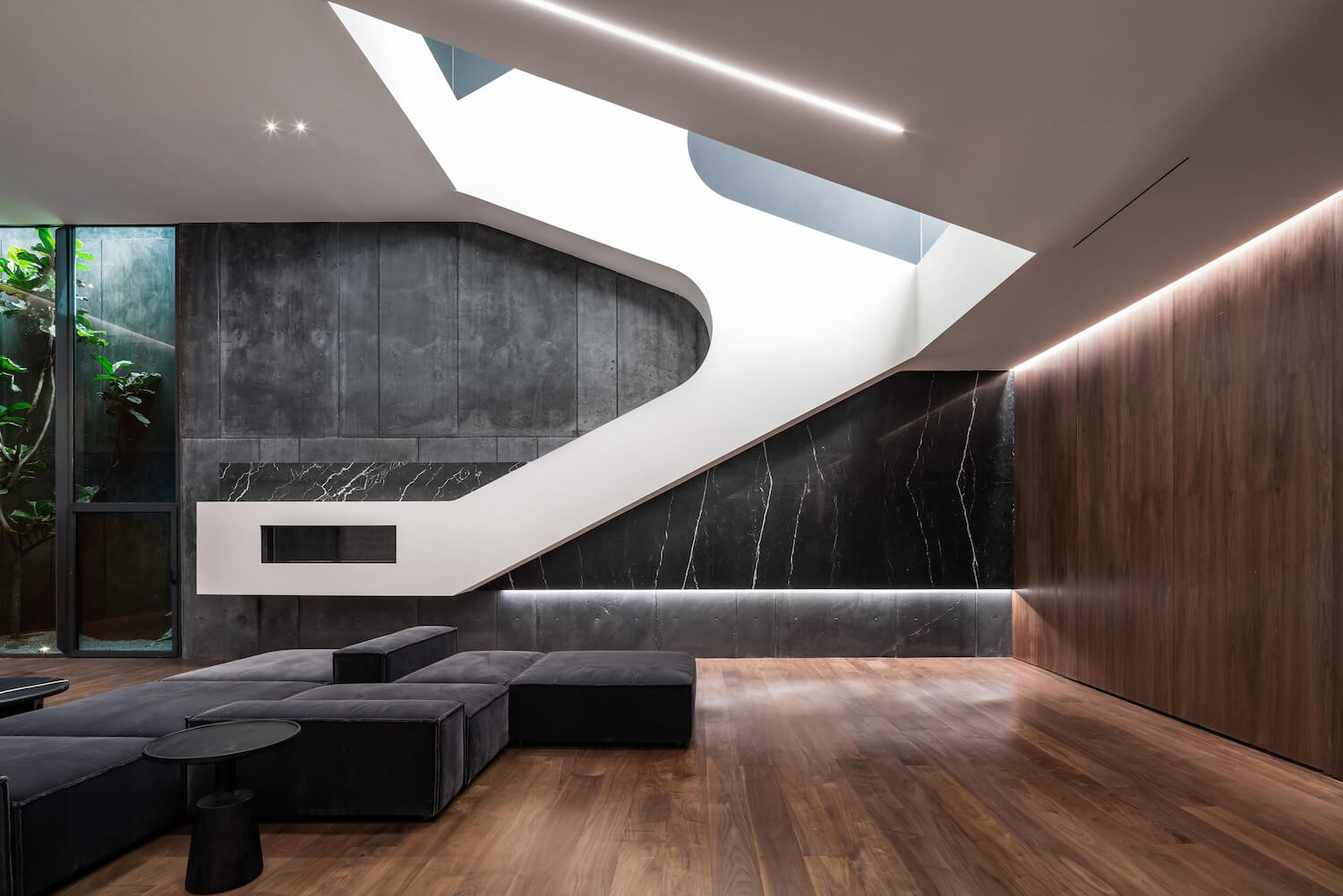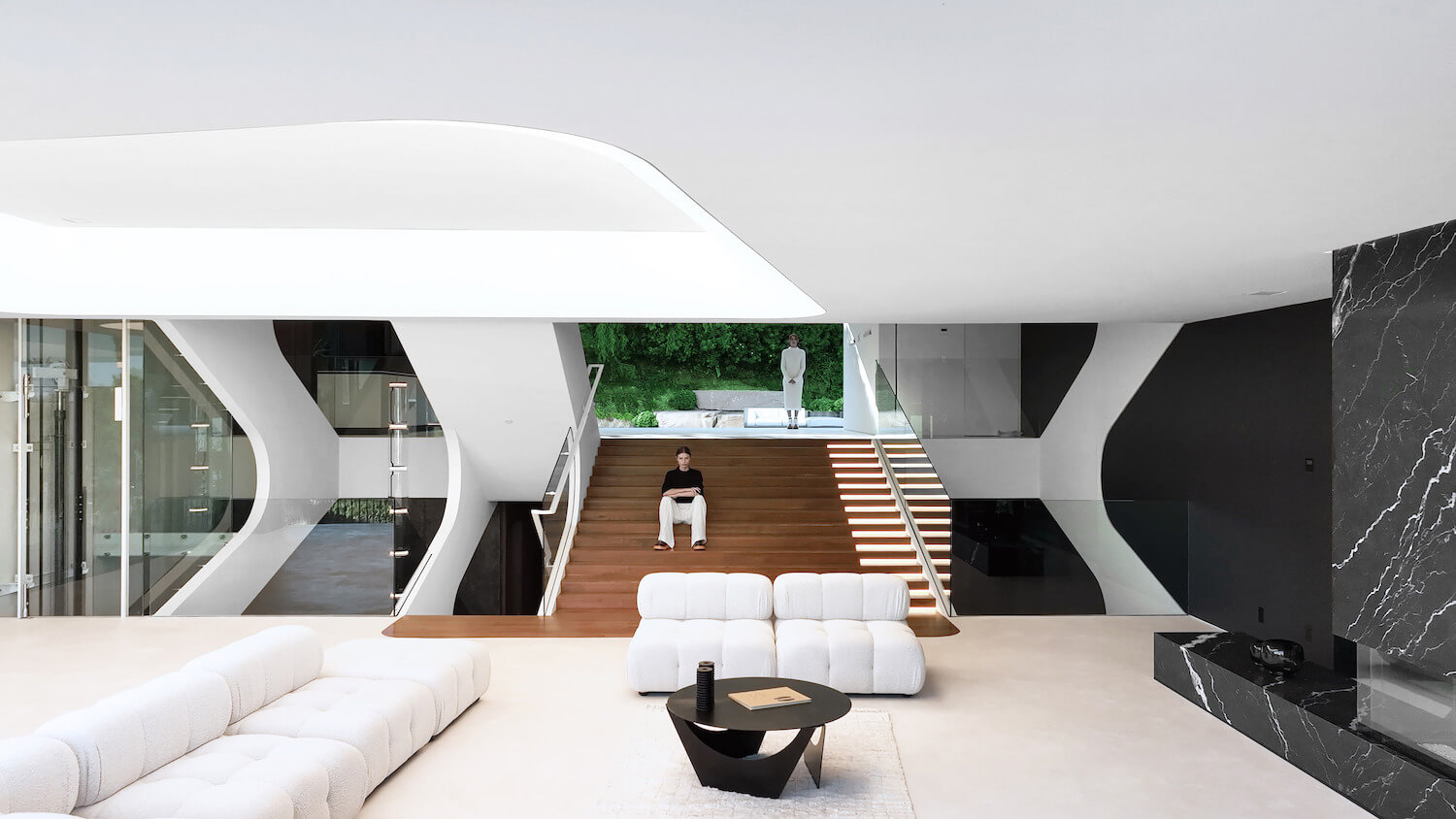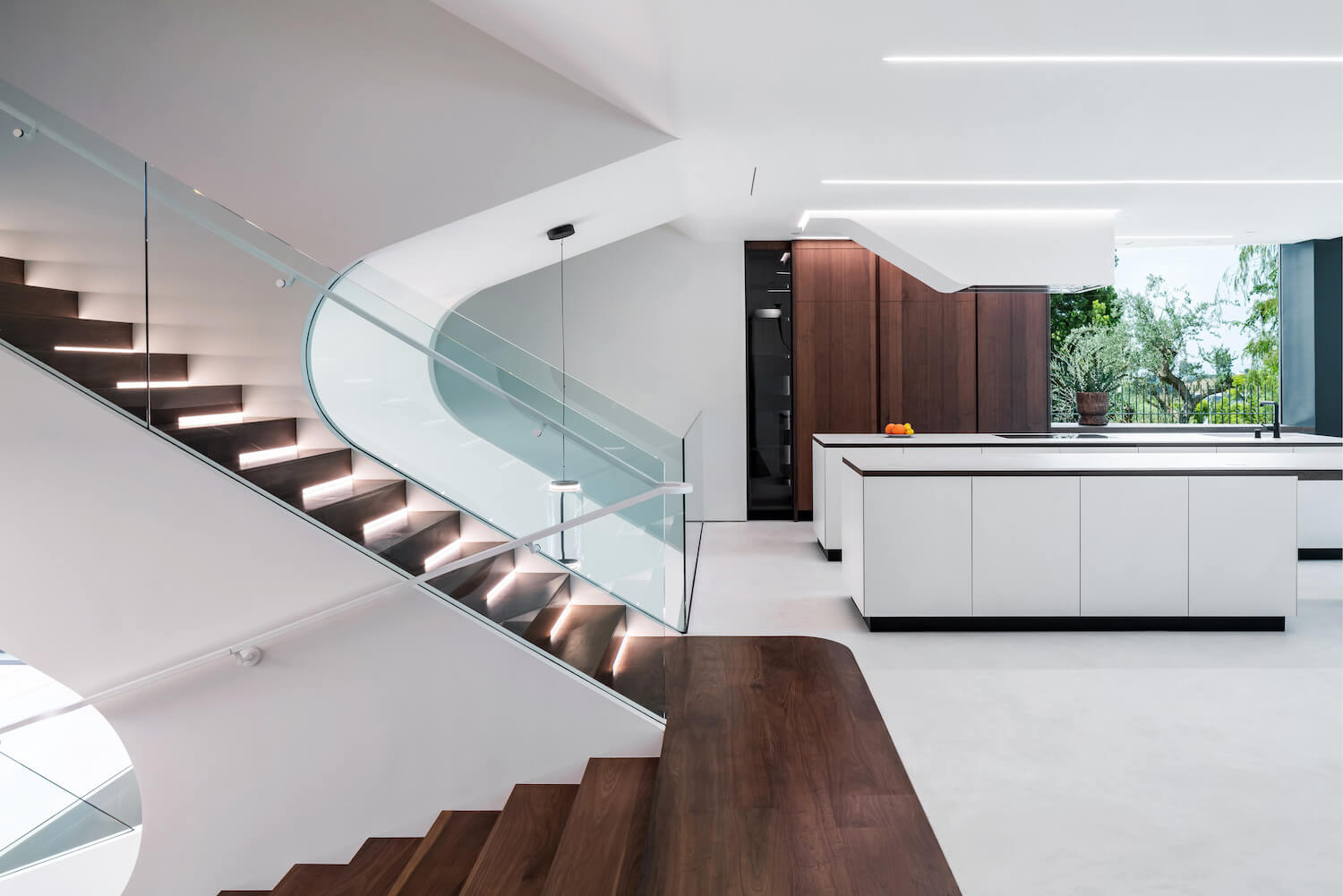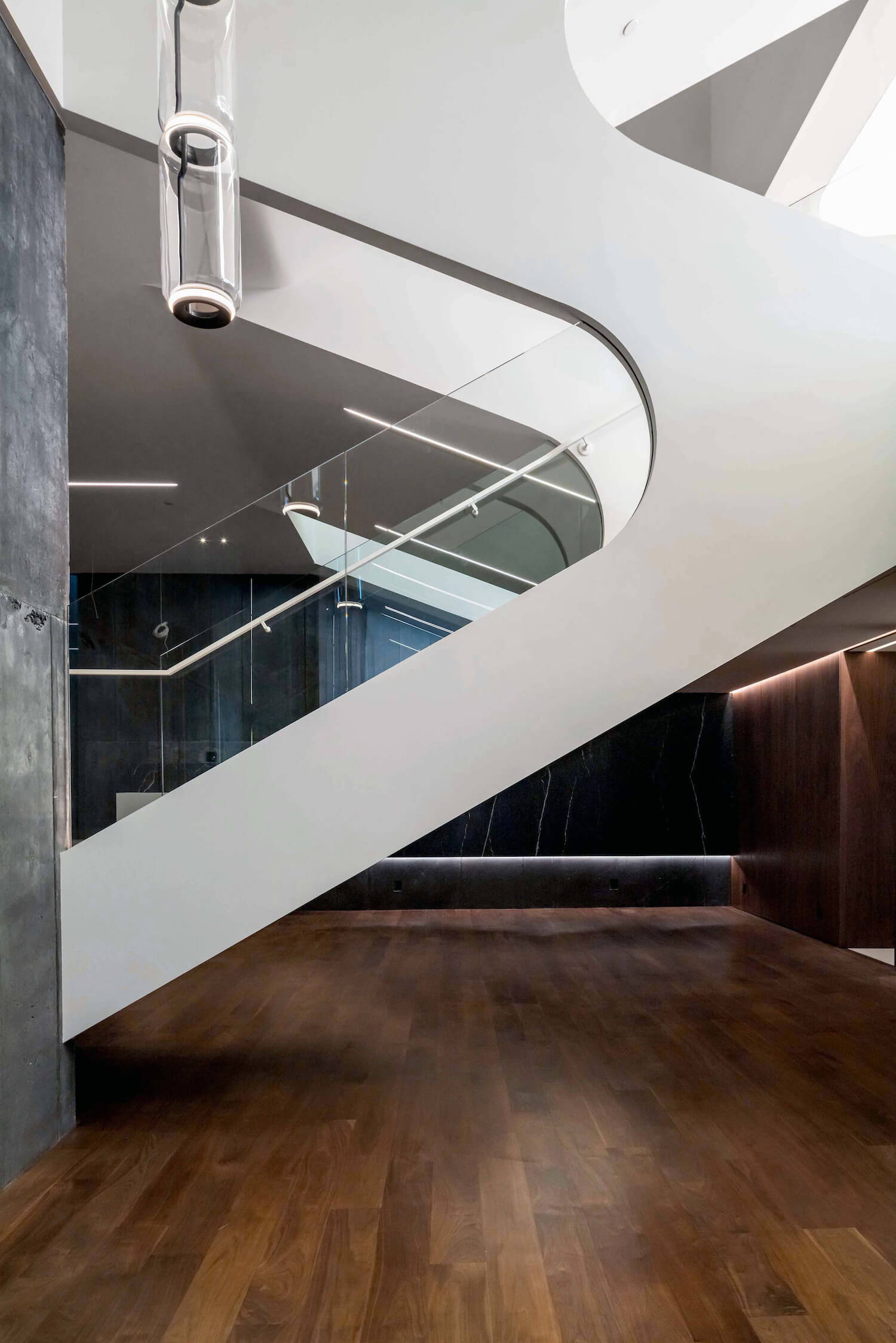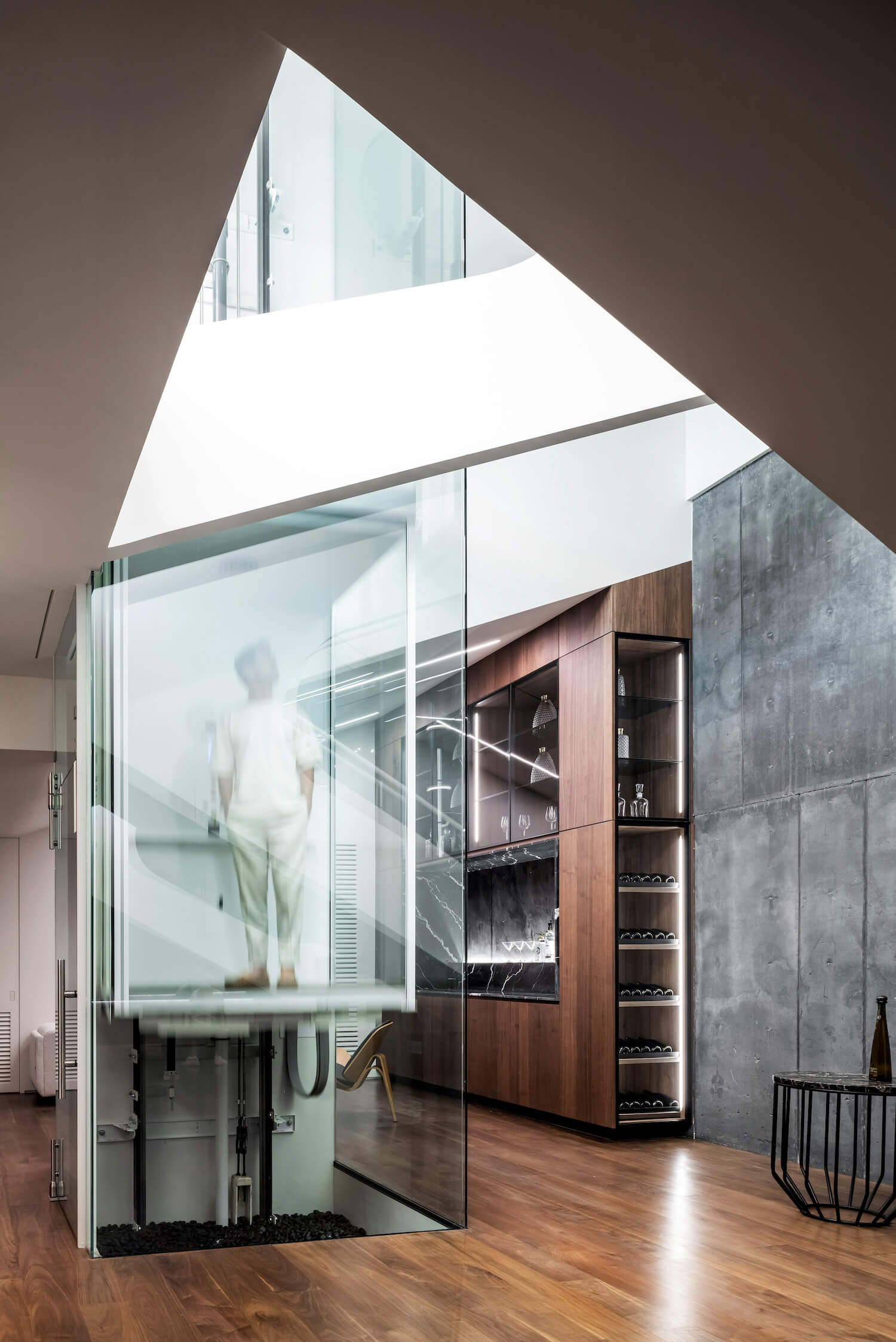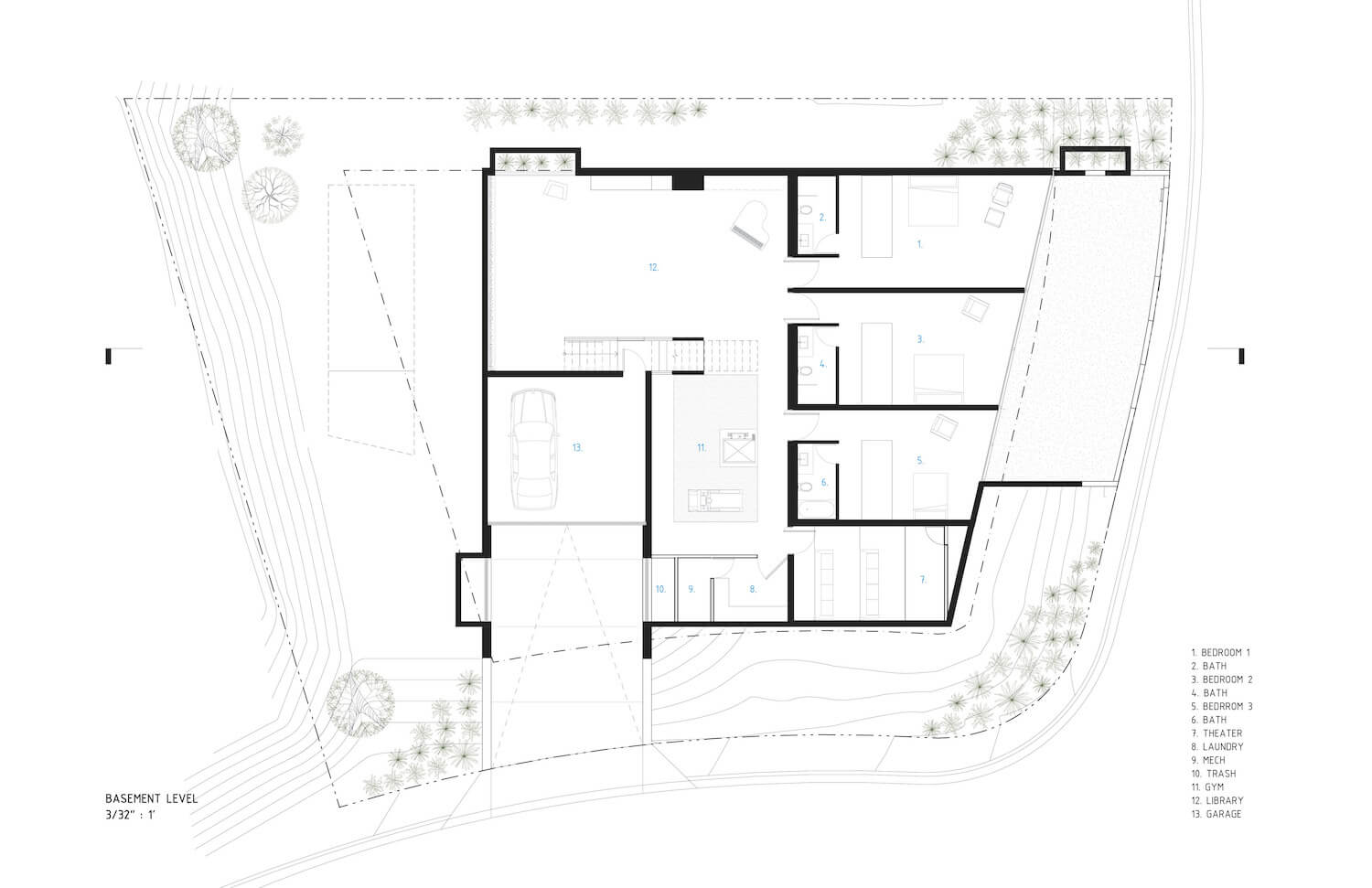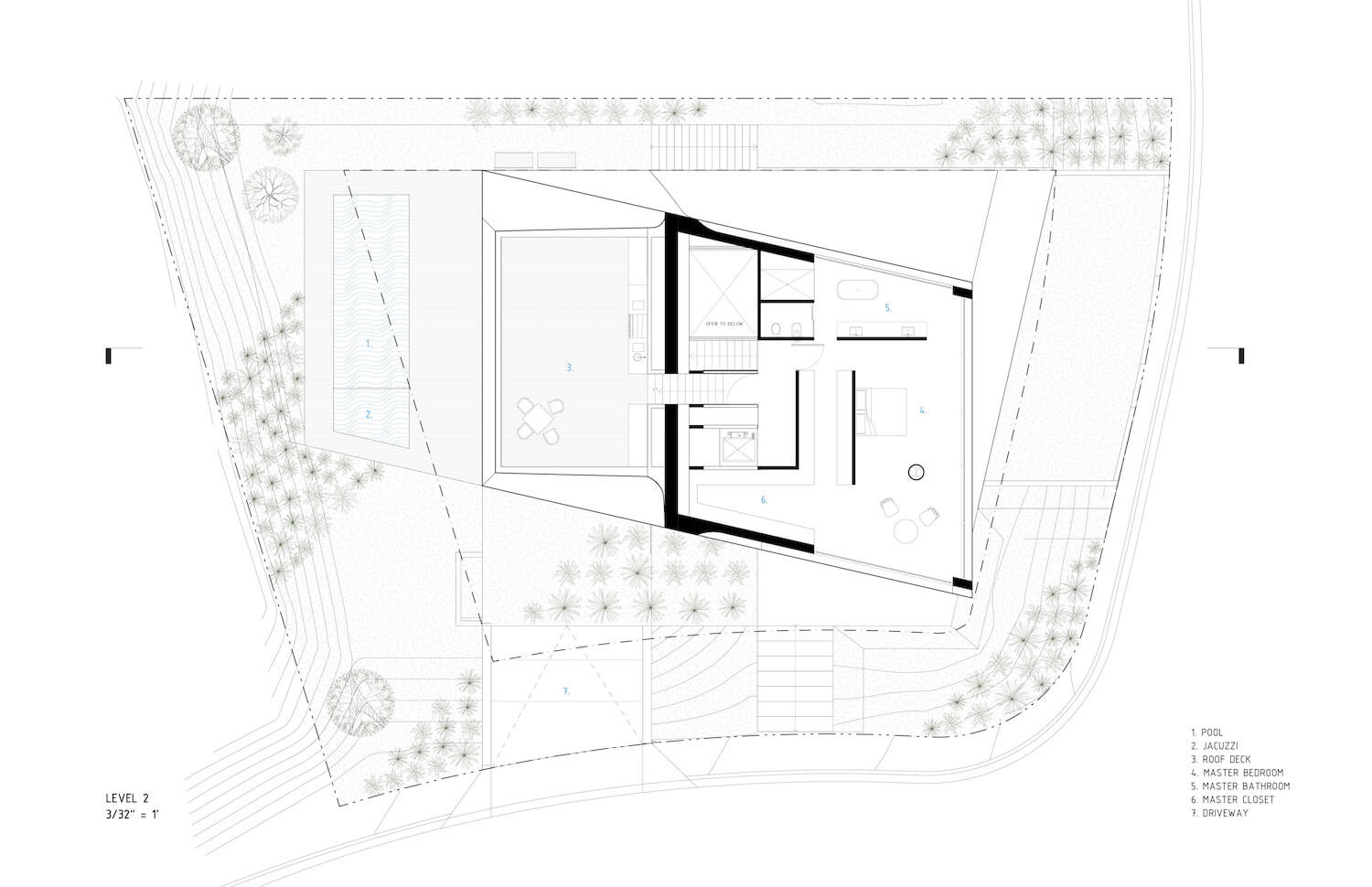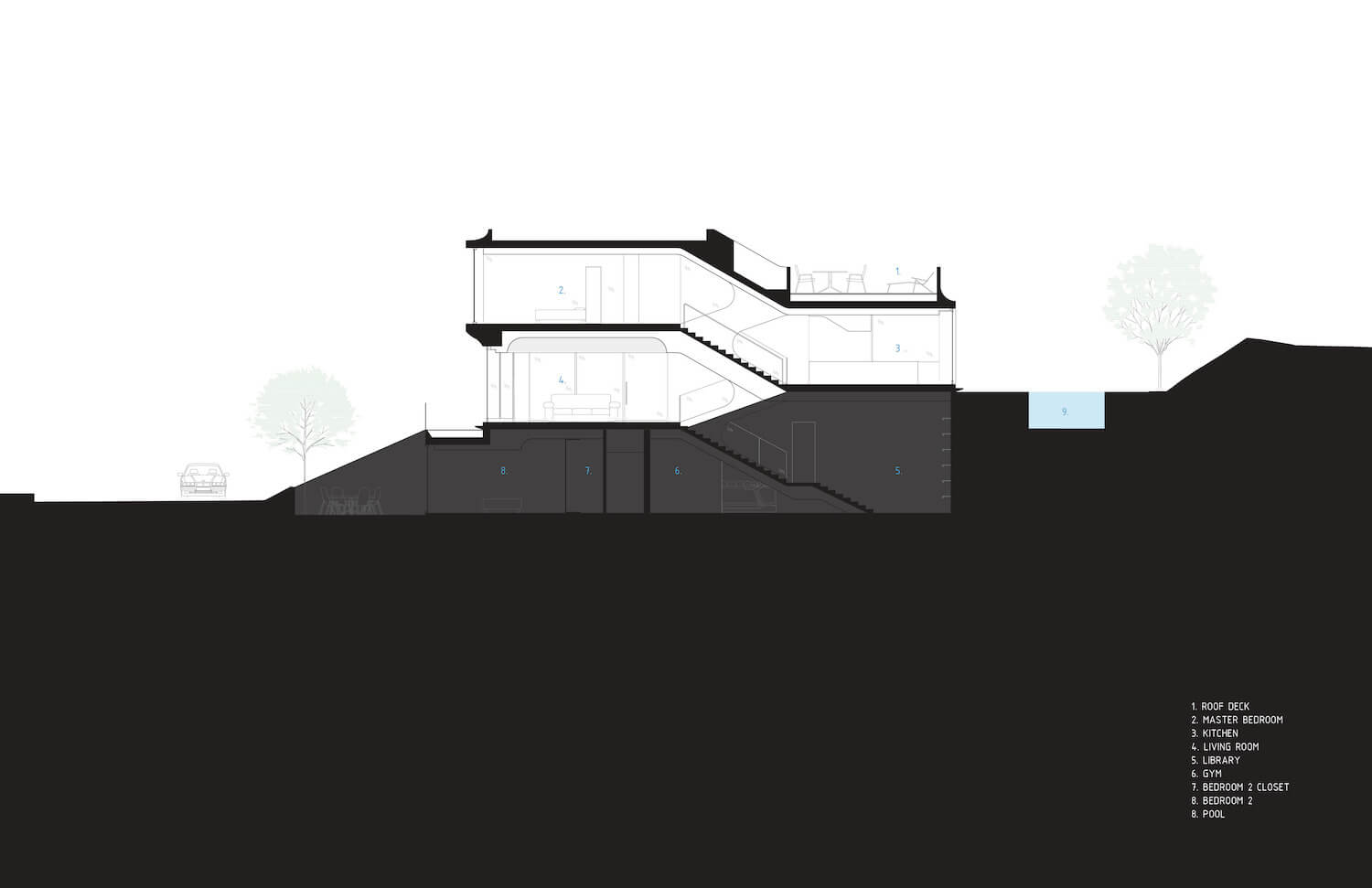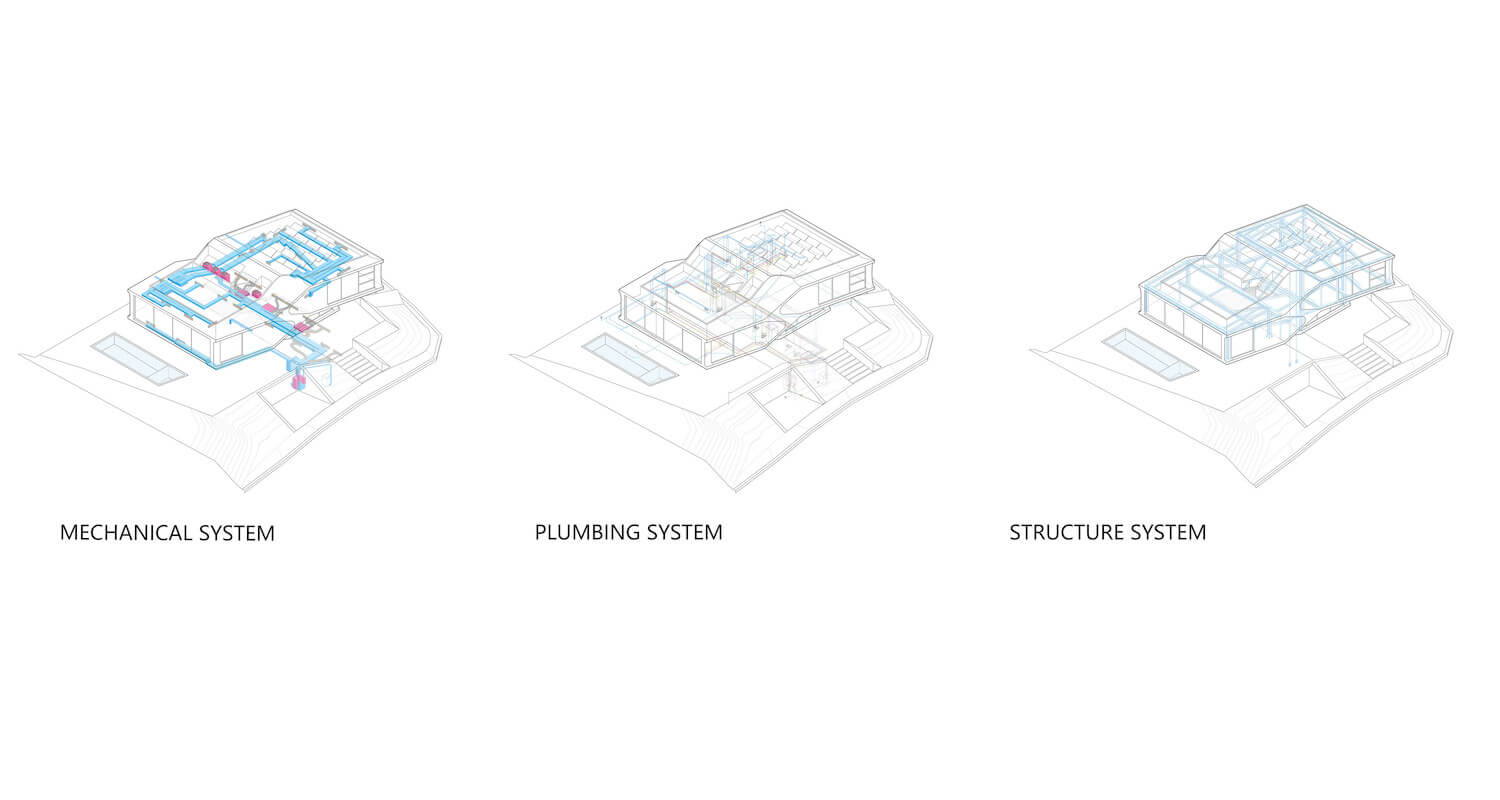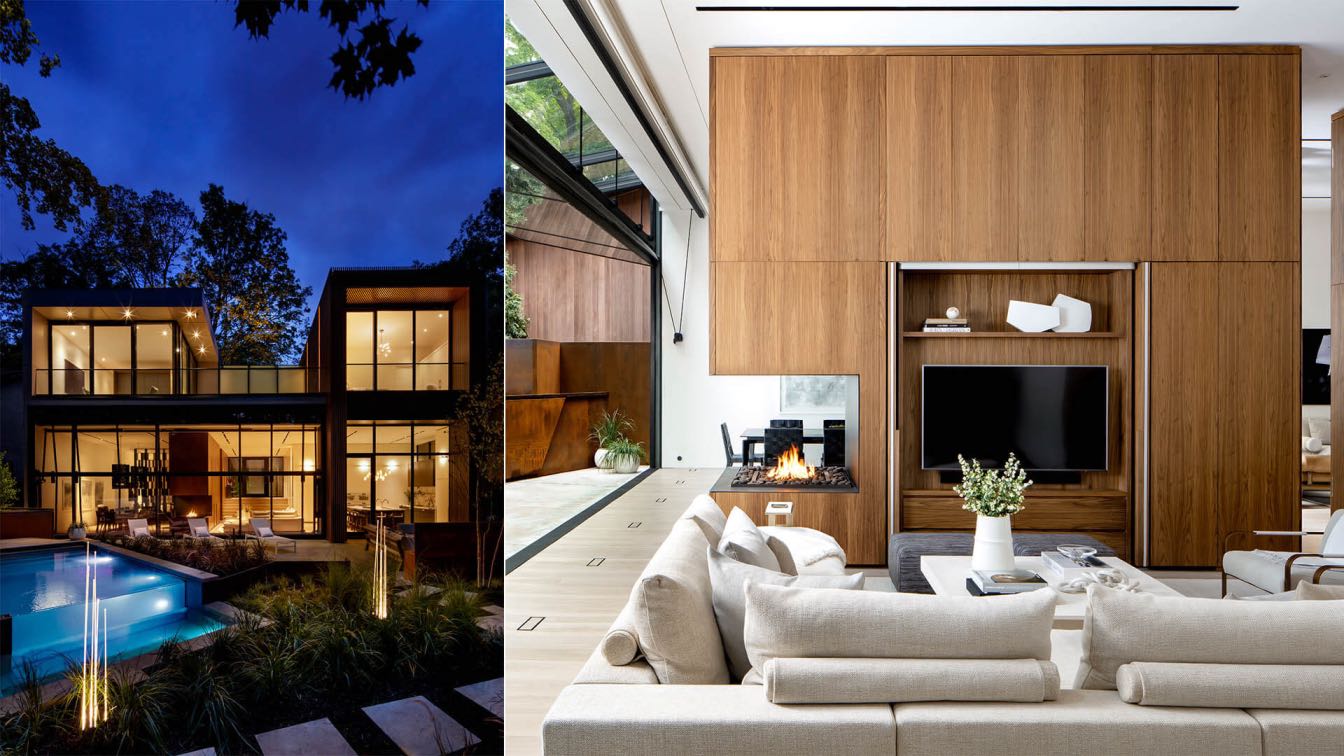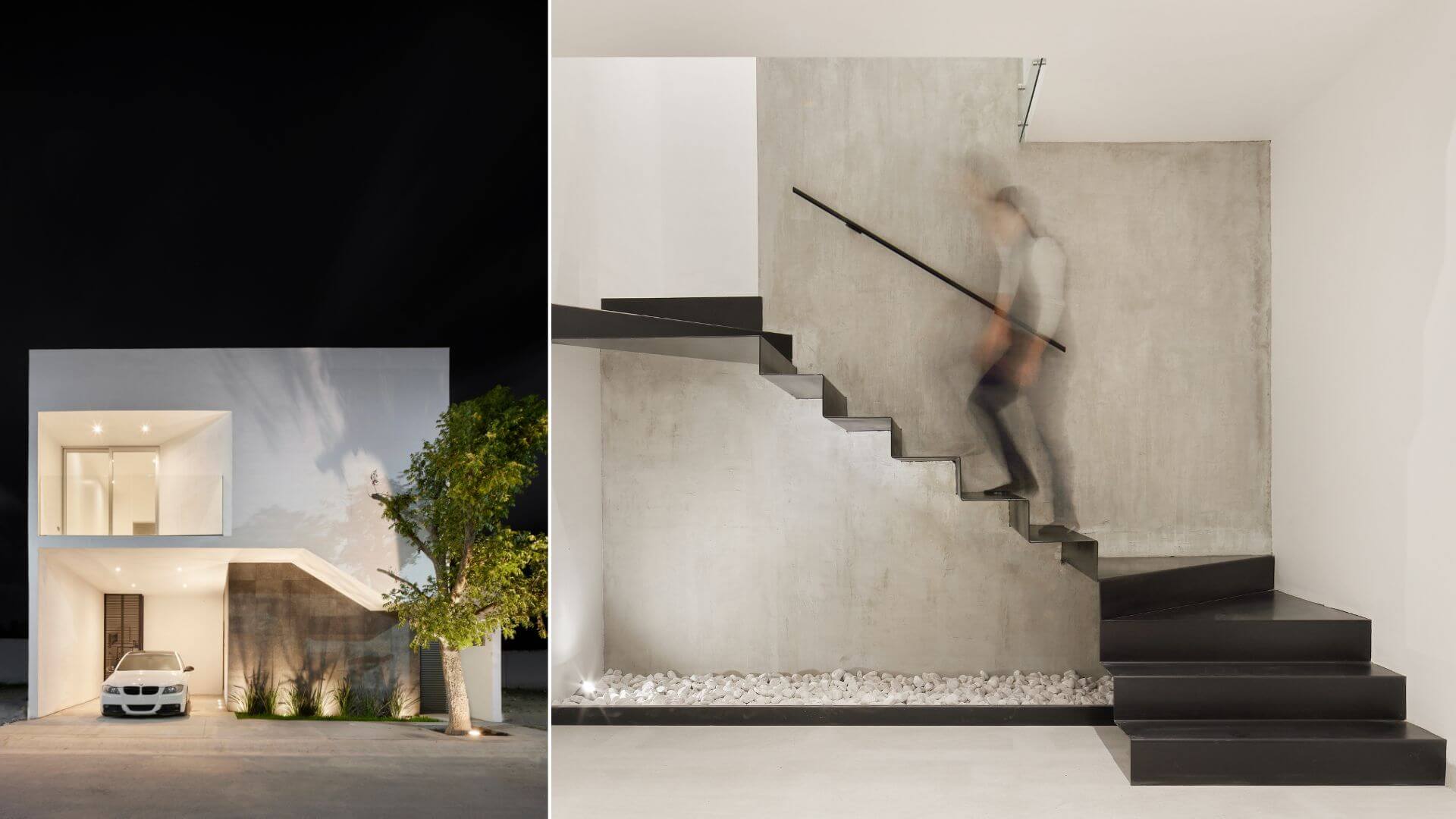Arshia Architects proudly introduces RO54, perched on a hilltop in the Bel Air neighborhood of Los Angeles, overlooking the Pacific Ocean and the Los Angeles basin. The project gently lands a dynamic building on top of a buried podium that replicates the natural topography that existed prior to the area being subdivided for development. This hollow post-war neighborhood has been transforming gradually, overtaken by recent developments that rely on size, rather than spatial quality. The concept set out to reduce the massing of a rather large project in order for it to lodge within the neighborhood proportionally. It proposes an alternative model within the confines of stringent regulations.
This project engages an exercise in spatial relationships to accelerate the programs of the house. It utilizes the split-level design to follow the topography of the hill, and to connect the floor half-story plates. The plates form adjacencies, both visual and functional, thus allowing twice the utility of an otherwise compartmentalized organization.
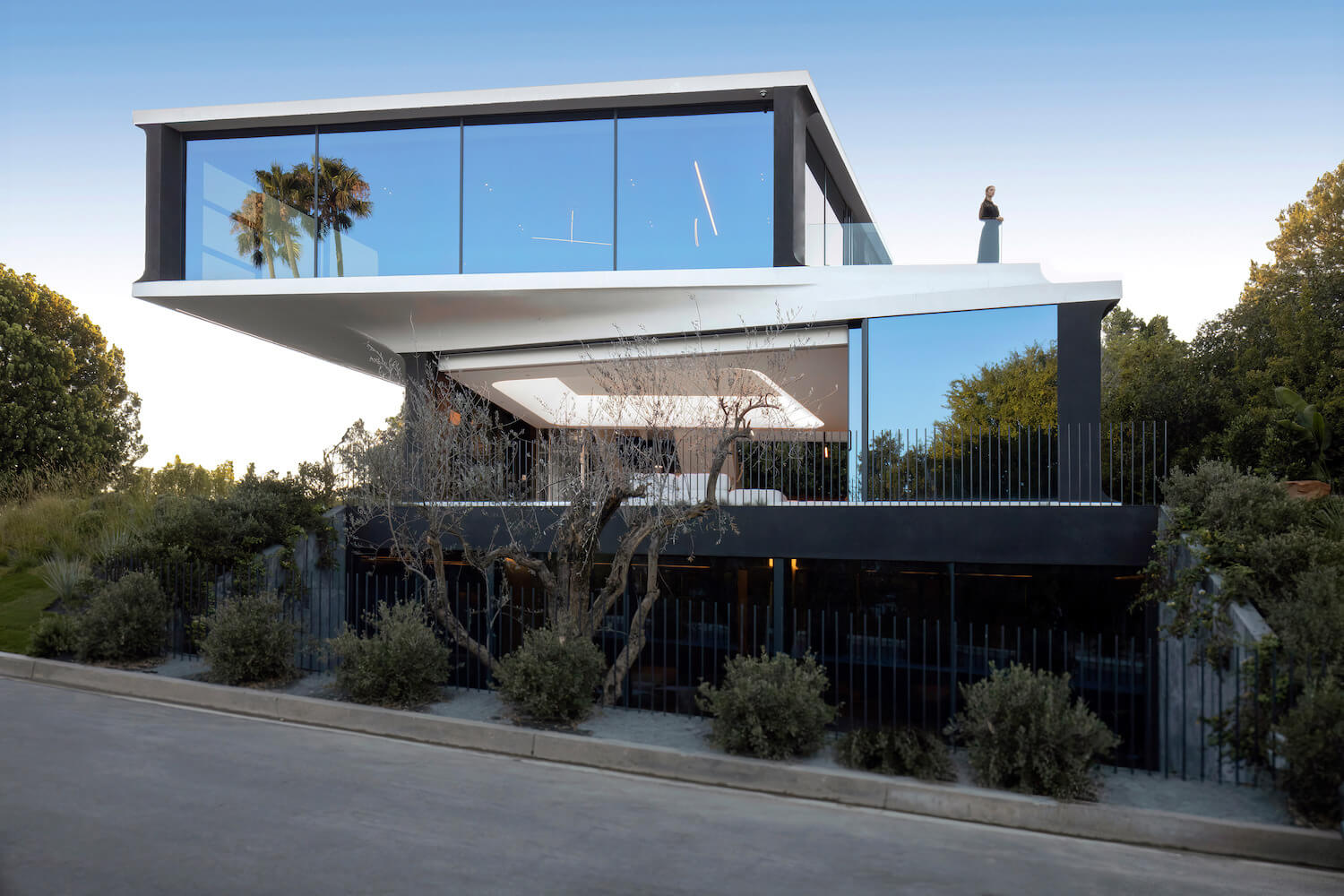
The project’s aesthetic was directed by streamline automotive design which, among others, proposed concealed performance for every technology in the house. The interior palette was based on a utilitarian approach to materials, in contrast to the overall ambient approach of the design where space overcame necessity. This balance of power proceeded in the backdrop of environmental sensitivity and clinical dearth.
A courtyard, created by daylighting the lower bedrooms from the buried podium, also acts as the rainwater runoff filtration system for the entire site. The project meets or exceeds stringent California green building and energy conservation standards such as low-flow plumbing systems, drought tolerant planting, rainwater filtration, photovoltaic integration, high efficiency building envelope and glazing, HERS rating of the mechanical system, and more.
Indoor materials specified were sourced naturally and are compliant with Low VOC standards. The design palette was kept minimal to an all natural selection including mica plaster, hardwood flooring, and natural stone. The project sought out minimal, low-impact, and proven materials, achieving a balance between durability, ease of maintenance, and responsible design.
